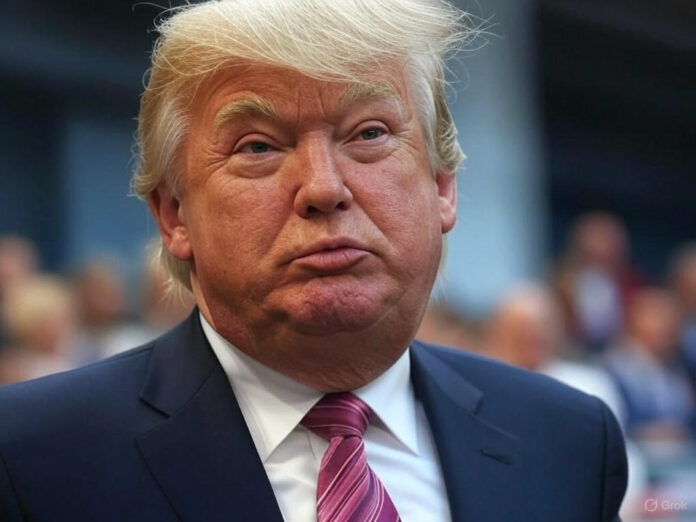Washington, March 27, 2025 – The Trump administration has delivered a significant blow to immigrants, particularly Indians, by pausing the processing of specific Green Card applications. This move, enacted through two executive orders signed on January 20, 2025, aims to enhance vetting procedures. It disrupts the dreams of thousands awaiting legal permanent residency in the United States.
USCIS suspends Green Card Applications
The U.S. Citizenship and Immigration Services (USCIS) has suspended processing some Green Card applications, including those filed by refugees and asylees. The Department of Homeland Security (DHS) confirmed this pause aligns with Trump’s directives titled “Protecting the United States from Foreign Terrorists and Other National Security and Public Safety Threats” and “Designating Cartels and Other Organisations as Foreign Terrorist Organizations and Specially Designated Global Terrorists.” CBS News first reported the shift, citing sources familiar with the decision. “USCIS recently told officials to stop processing Green Card applications by immigrants with asylum or refugee status,” the outlet noted on March 25.
Trump’s orders mandate “vetting and screening to the maximum degree possible” for all foreign nationals, especially from “regions or nations with identified security risks.” Consequently, this indefinite halt leaves many in limbo, amplifying uncertainty for Indian immigrants.
Over 2.9 million Indian immigrants in US
Indians constitute a significant portion of the U.S. immigrant population. Over 2.9 million Indian immigrants resided in the U.S. as of 2023, according to the Migration Policy Institute. This number has surged since 1960, with the most significant influx occurring between 2000 and 2023. Many rely on Green Cards to secure permanent residency, often after years on H-1B visas.
The pause directly affects those in the employment-based Green Card backlog, which exceeds 1 million for Indians, per a 2023 Cato Institute report. David Bier, the institute’s director of immigration studies, criticized the move on X, calling it a setback for legal immigrants. “The pause could affect a growing number of Indian nationals,” Business Standard reported on March 26. For professionals in tech, healthcare, and academia—sectors dominated by Indian talent—this delay threatens career stability and family unity.
Pause is a national security measure : US government
The administration justifies the pause as a national security measure. Laura Collins of the Bush Institute-SMU Economic Growth Initiative told NBC News, “Under the first Trump administration, USCIS went through every application with a fine-toothed comb.” She highlighted past rejections for minor errors, like omitting a middle name. Officials may revisit applicants’ social media and records, even if they have been previously screened.
The Financial Express noted on March 26, “The move aims to do ‘more vetting’ on individuals applying for legal permanent residency.” However, critics argue this duplicates existing rigorous checks. Azadeh Erfani from the National Immigrant Justice Center told Newsweek, “USCIS already conducts extensive vetting. This stop will unfairly block people who have full eligibility.”
Pause has had extended wait times for over a year
Immigration advocates have slammed the decision. “This sweeping and indefinite stop on Green Card processing is yet another attempt to paint all immigrants as a national security risk baselessly,” Erfani added in her Newsweek statement. She emphasized that the pause has extended wait times for over a year.
Ketan Mukhija, a senior partner at Burgeon Law, advised applicants to prepare meticulously. “Couples sponsoring spouses should ensure all documentation is complete to avoid setbacks,” he told Business Standard. He suggested legal action, like filing a writ of mandamus, if delays persist unreasonably.
Punjabis and Gujaratis, prominent in asylum claims
The DHS has not clarified which applications face suspension or how long the pause will last. The Hindustan Times reported on March 25, “It is unclear which applications were affected.” This vagueness fuels anxiety among Indian families. For instance, Punjabis and Gujaratis, prominent in asylum claims, may face heightened scrutiny, per a Johns Hopkins University study published in February 2025.
Meanwhile, Trump’s broader immigration agenda looms large. He has vowed to deport millions of illegal immigrants, a promise reiterated during his January 20 inauguration. Some fear this could indirectly pressure legal immigrants, despite their compliance.
Indians received 72% of H-1B visas annually
The numbers underscore the crisis. Indians received 72% of H-1B visas annually, per the Cato Institute. Yet, the employment-based Green Card cap—140,000 per year, with a 7% per-country limit—creates decades-long waits. “New Indian applicants face a lifetime wait, with 400,000 likely to die before getting a Green Card,” Bier warned in his 2023 report.
A DHS notice dated March 5, 2025, also mandates collecting social media handles from Green Card applicants. This follows Trump’s Executive Order 14161, signaling tighter controls ahead.
The pause marks a pivotal moment for Indian immigrants. It disrupts pathways to stability, forcing many to rethink plans. Legal battles loom, as advocates prepare to challenge the orders. The community watches anxiously, caught between policy shifts and personal aspirations.
As Trump’s administration doubles down on immigration control, the fallout for Indians in America grows clearer. The dream of a Green Card, once a beacon of hope, now flickers amid uncertainty.

